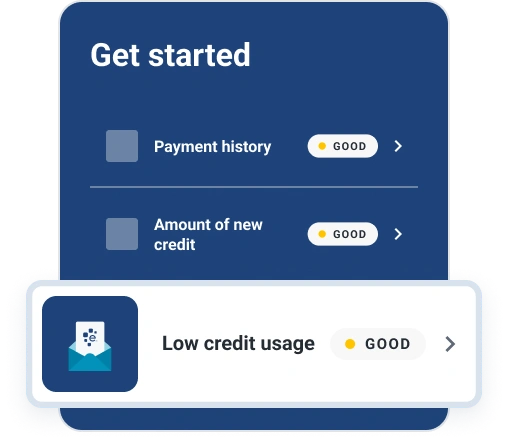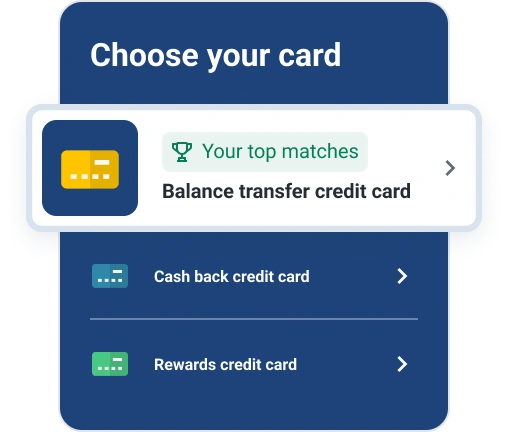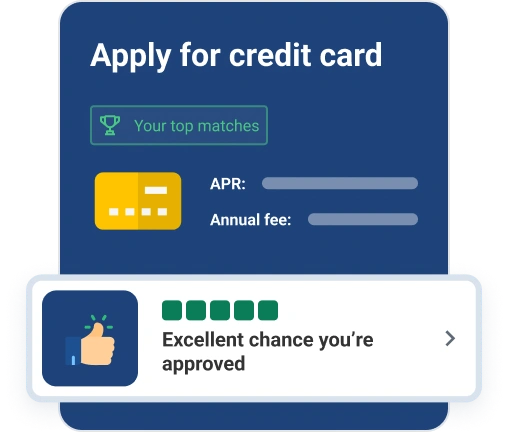At Experian, one of our priorities is consumer credit and finance education. This post may contain links and references to one or more of our partners, but we provide an objective view to help you make the best decisions. For more information, see our Editorial Policy.
In this article:
Using a new credit card's balance transfer option can mean big savings on interest payments as you pay down existing debt. But it doesn't make that debt go away—and if you're not careful, it can subtly encourage you to take on new debt.
What happens after a balance transfer largely depends on how you manage your debt payments and existing credit card accounts. Here are some guidelines for using a balance transfer wisely and avoiding its potential traps.
What Is a Balance Transfer?
The strategy behind a balance transfer is fairly straightforward: You pay off the balance on one or more existing credit card or loan balances using a new credit card.
As long as the interest rate on the new card is lower than the older one, you'll save some interest charges, but you'll really save big if the new card offers a 0% annual percentage rate (APR). This "teaser rate" is temporary, and typically lasts just six to 12 months before the card's standard interest rate is applied to all outstanding balances. If your credit is very good or exceptional, you may see offers for balance transfer cards with considerably longer introductory periods; at least one credit card issuer recently touted a 21-month intro period.
Save with an intro 0% APR balance transfer
Make The Most of the Intro Rate
The key to getting the most out of a balance transfer is to use that introductory period to pay down as much of your transferred debt as possible. A good way to start is to divide the total transferred balance by the number of months in the introductory period to determine the amount you'll have to pay every month to eliminate the balance by the time the interest rate increases.
As an example, let's say your new card offers a 0% interest rate on balance transfers for nine months. If you use it to pay off a $3,000 balance on one card and a $2,000 on another and pay a standard 3% transfer fee on those balances, your new card will have a starting balance of $5,150. Divide that amount by nine months and you get a rate of $572 per month to pay it off in full before the interest rate increases.
If you can cover that monthly amount for the duration of the introductory period, you should try to do so, even if it's a stretch, because that'll let you zero-out your debt without paying any additional interest. In rare instances, cardholder agreements stipulate that if you don't pay off your transfer balance before the end of the introductory period, you'll be charged interest on the entire transfer balance, just as if the transfer had been a regular purchase. Check the fine print in your card terms, and if that's the case, avoid using the card for balance transfers unless you're extremely confident you can pay them off in the allotted time.
In all other instances, if you can't manage the full monthly portion, take a look at your household budget and dedicate as much as you can to paying down the balance while the teaser interest rate is in effect. Even paying interest on whatever balance remains, you will still have reduced your total cost significantly.
Keep an Eye on Your Credit Score
It's generally a good idea to get in the habit of monitoring your credit score as an indicator of your overall financial health, and doing so during a focused effort to pay down debt can be a great motivator. Be aware, however, that using a balance transfer could cause your credit score to dip some before it starts to climb. There are a couple of reasons for that:
- Any time you apply for and open a new loan or credit card account, your credit score typically drops a few points, both because your lender performs a hard inquiry to check your credit before deciding whether to accept your application and because, in the statistical analysis used by credit scoring systems, whenever you increase your overall borrowing limit, you are considered at greater risk of being able to pay your bills. After a few months of keeping up with your payments, your score will likely recover from this dip.
- The balances transferred to your new card may give it a high utilization rate. Credit scoring systems such as the FICO® Score☉ and VantageScore® consider a measurement known as a credit utilization ratio, or how much of your available credit you're using, when calculating your scores. Experts recommend staying under about 30% utilization to avoid hurting your credit score.
Scoring systems give heavy consideration to your overall utilization—the sum of all of your credit card balances divided by the sum of all your borrowing limits—but they also look at the utilization for each of your individual cards. Making a balance transfer generally reduces your overall utilization by increasing your overall borrowing limit without adding to your outstanding balances. But if the utilization on your old cards was under 30% and the transfers (plus fees) make the utilization on the new card exceed 30%, your credit score may decline as a result.
These initial score dips are normal and, like all declines in credit score, reversible. Within a few months of a concerted effort to pay down your debt, you can expect to see your score increase—as long as you resist the urge to add to your credit card balances.
Manage Your Old Credit Cards Wisely
Using a balance transfer to concentrate and attack credit card debt is effective, but only if you avoid running up new debt as you pay off the old. That's where temptation can creep into the picture: Those cards you paid off when you made your balance transfer may start whispering from your wallet, insisting that just one purchase or shopping trip will hardly matter on a card with a zero balance. But any payments you have to make on an older card divert funds from your transfer balance.
If you find it hard to resist the lure of an unused card, consider taking it out of your wallet, but unless you're paying a high annual fee on the card, you should probably think twice about closing it. Closing a credit card account reduces your total borrowing limit and increases your overall utilization, which has an adverse effect on your credit score.
Avoid New Purchases With Your Balance Transfer Card
It's not just the old cards that you have to worry about when thinking about running up balances. Making purchases on the card to which you've transferred your balances is a bad idea as well, for several reasons:
- For starters, it's obviously counterproductive to add to a balance you're trying to pay down.
- Many cards that offer balance transfers at low or 0% introductory rates charge their regular interest rates on new purchases. Putting new charges on such a card during the intro period essentially creates two separate balances on the account—one for new purchases accruing interest at the normal rate and another for the transferred balance at the teaser rate. This can be confusing and makes it harder to see progress toward lowering overall debt.
- In cases where two separate interest rates apply to balances, card issuers may apply your payments to the zero-interest portion of the balance first. In that case, you'd accumulate interest charges on any new purchases you make until you've paid off your entire transferred balance. If your balance transfer card works that way, it'll likely make more sense to use a different card if you absolutely must use one for an emergency expense.
Beware of Serial Balance Transfers
If you still have outstanding credit card debt as the clock ticks down on the intro period on a balance transfer card, you might think about getting another balance transfer card to cover whatever remains from your last transfer.
There's nothing to stop you from looking into that option, but there are some concerns you should be aware of if you're considering it:
- If the promotional period on your balance transfer card is relatively short (six to nine months), your credit score may be only just fully recovering from the natural dips associated with establishing new credit—and applying for another card will cause your score to dip all over again. You'll have better chances of improving your borrowing terms if you wait at least 12 months and give your credit scores more time to reflect the results of your debt reduction efforts.
- Credit card issuers are wary of applicants who seek low interest transfer cards while maintaining high levels of debt, so if you haven't made a good dent in your overall debt level since receiving your last balance transfer card, you may have difficulty qualifying for another one.
Develop Good Credit Habits
Using a balance transfer to attack debt is a smart way to work toward better credit, but it's not the only one. So if you're trying to increase your credit scores, there are a number of tips to keep in mind, including:
- Pay your bills on time. This is the single most important factor affecting your credit score. If you have trouble remembering when bills are due, consider using calendar reminders, scheduled automatic payments and other digital tools to help keep your payments timely.
- Maintain low (or no) balances on your credit cards. When possible, pay your credit balances in full each month, which spares you interest charges and also promotes higher credit scores. Also, try to keep your card balances at or below about 30% of your borrowing limit to avoid pulling your credit score downward.
- Keep older credit card accounts open. Unless they carry expensive fees, keeping these cards open will preserve your amount of available credit and lengthen your credit history, both of which help your credit scores.
- Consider enrolling in the Experian Boost®ø program. This allows your timely payments on utility and cellphone bills to be reflected favorably in your Experian credit score.
A balance transfer card can be a great vehicle for reducing overall debt and helping improve your credit scores. Making the most of a low or 0% introductory rate can save you big on interest charges, as long as you avoid the lure of taking on additional debt while paying down your transfer balance.




